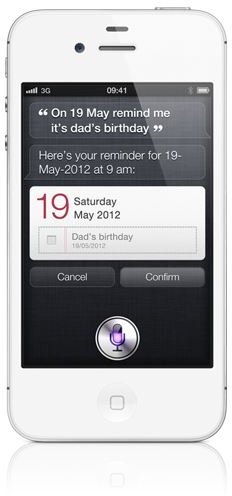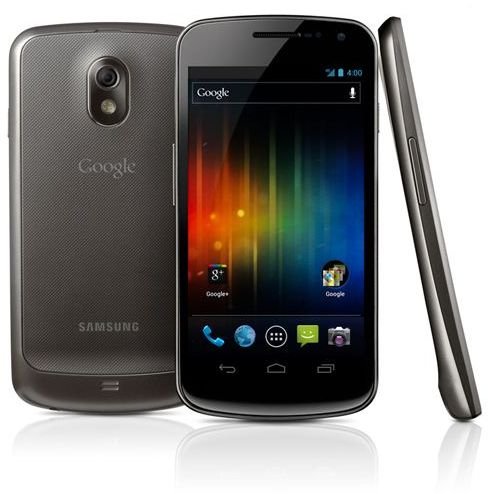Smartphone Smackdown: iPhone 4S Versus Android's Hard Hitters
iPhone 4S Versus Android: It’s On!
In all fairness this is a difficult and somewhat unbalanced comparison to make, given that we’re pitting a single smartphone handset (the iPhone 4S) against an operating system spread across lots of different hardware models of various ability (Android). But that doesn’t change the fact that you’re spending a lot of money on a new smartphone, and the question is an important one – unbalanced or not.
And cost is probably the most important place to begin, because it’s the pivot point of your decision. Cost is akin to choice, so if you’re already asking whether you can justify the cost of an expensive iPhone 4S contract, Android is undoubtedly looking like a field with a lot more flowers to pick.
This isn’t to say that Android is cheaper than an iPhone. The top of the range Android-powered handsets are likely to run up a similar price, but Google’s platform offers the option of a slightly less powerful handset at a much more appealing price point. Since choice is the cornerstone of our capitalist existence, points have to go to Android where the iPhone 4S flounders.
Tech Specs
The iPhone 4S divided opinion by providing a limited hardware update, rather than a hot new iteration of the iPhone franchise. But it has been well received, particularly in terms of its camera and processor power that, according to Apple, leaves the previous iPhone 4 standing still.
Android manufacturers, however, are not standing still. When compared to the high-end Android handsets on various hardware developers’ slates, the iPhone 4S doesn’t have such impressive numbers.
Looking at the A5 processor, which is the jewel in the iPhone 4S’s crown, its 800 MHz speed is already overshadowed by Samsung’s Galaxy Nexus and Motorola’s Droid RAZR, which both boast 1.2GHz processors (although all devices are dual-core). Both these Android handsets have double the iPhone 4S’s RAM, weighing in at 1GB each. The HTC Amaze goes even further with a dual-core 1.5 GHz processor and it is matched by T-Mobile’s version of the Samsung Galaxy S II.
If it’s purely a case of the bigger numbers win, Android is on top.
Software and Solutions

Typically, PC users aren’t too enamored with iTunes. It’s a laborious, un-optimized piece of software that struggles and strains – some might say deliberately, as Apple backhandedly demonstrates the virtues of owning a Mac. But desktop software aside, the iPhone 4S has the advantage of a unified content backup.
Android competes, ultimately, with its ability to sync to a Google account, buy music from Amazon and use similar digital film distribution channels as the iPhone 4S, but it’s not quite so neatly packaged. Apple puts everything under one banner, from sync to software and multimedia purchases, and makes it all available right out of the box. For once, it seems Apple offers everything Google’s system does, plus its own extensive and powerful suite of sync, backup and shopping portals.
Android offers firmware updates almost as regularly as Apple does, which is both good and bad. It’s good when an update delivers the likes of Siri, which has left Google panicking for an alternative on its own super-powered handsets. Hardware is only as good as the software it runs, and iOS is incredibly tough to beat in terms of its slick operation and great features.
But what Android lacks in style, it makes up for in customization – a dirty word that will get any designer fired from Apple. So is it a tie on the software and firmware front?
Siri is the new smartphone superstar, and even if Google does catch up and offer a similar virtual assistant, it’s always going to be known as “Android’s Siri.” Extra points to the iPhone 4S. But for the more tech savvy smartphone user, the iPhone 4S’s limited sandbox will feel very restrictive, making Android an easier choice for those who demand full access.
Hardware Fragmentation
Admittedly this is more about Apple vs. Android, than the iPhone 4S alone, but the ground Google’s OS has made over Apple’s smartphones suffers from a systemic problem. This ground has been gained by putting the Android OS into a large number of very different handsets, and brings with it the difficulty of hardware fragmentation.
Java developers lamented this issue, with some – in the heyday of mobile gaming – having to create up to 800 different versions of the same game so it would play on the vastly different devices out there. Android is heading in the same direction, with software compatibility across the Google smartphone board becoming increasingly fractured.
Apple is the only iPhone manufacturer, so this is much less of a problem for iPhone users. It’s not eradicated completely, as from the moment it launched there were games and apps (Siri not being the least of them) that only run on the iPhone 4S, but this isn’t even close to the fragmentation Android handsets suffer from. And the problem is only going to get worse unless Google takes some serious – and quite unlikely – steps with hardware manufacturers.
The iPhone 4S, therefore, is the compatibility king.
Apple Leads, Google Follows?
There are some damn powerful Android handsets out there that already – albeit minimally – top the iPhone 4S in terms of raw hardware power. Google is also making a visible effort to limit software fragmentation with Android OS 4.0, even if the issue shows no immediate signs of subsiding. If hardware performance comes before software for you, then Android is probably the path to take.
But power computing isn’t what makes a smartphone great, and Apple takes the lead in terms of a unified – if annoyingly controlling – experience across platform, multimedia, games and apps. It also has one other significant advantage.
There’s still a distinct sensation that Apple leads, and Google follows. Until Google breaks away from a neck and neck race that Apple isn’t even competing in, and makes an effort to do something unique, to take the same kind of design initiative that established the iPhone as a smartphone revolution, it can never win. It has the software, it has the hardware, and it has the potential to leave the iPhone 4S standing, but what it evidently lacks is the imagination. Apple has this by the barrel full.
So looking at the current smartphone horizon, the iPhone 4S shines just a little brighter than its closest Android competition. If you can afford it.
References
- Phone: Samsung Galaxy Nexus Tech Specs
- Apple: iPhone 4S Technical Specifications
- Tecca: The iPhone 4S and iOS 5 vs. the Galaxy Nexus and Android 4.0
- What Culture: Apple vs Android: Is The iPhone 4S Already Dead?
This post is part of the series: The iPhone 4S
Wondering whether to buy an iPhone 4S? Unsure what to do with it if you do buy one? This technology series covers everything you need to know about adopting Apple’s hardware and software upgrade to the outstanding iPhone 4S.
